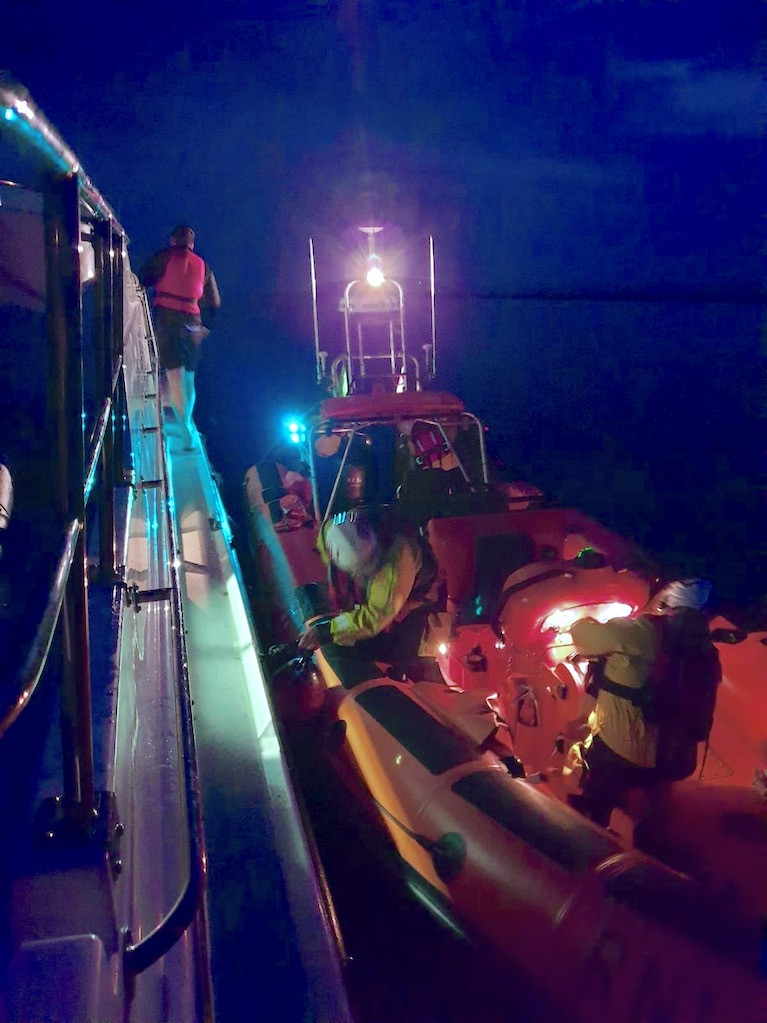At 9.28 pm last night, Thursday, August 13, Valentia Coast Guard requested Lough Derg RNLI to go to the assistance of 8 adults on a 45ft cruiser aground by Ryan’s Point, inside the Mountaineer Bouy at Barrack Bay.
At 9.42 pm the RNLI lifeboat Jean Spier launched with helm Eleanor Hooker, and crew members Owen Cavanagh, Keith Brennan and Doireann Kennedy on board. The wind was northeasterly, Force 2. It was nightfall with poor visibility; the RNLI volunteers used on-board electronic navigation, RADAR, searchlights and local knowledge to steer their course to the casualty.
Once the lifeboat rounded the Mountaineer Buoy, the crew took soundings of the depths in a cautious approach to the casualty vessel. The lifeboat came alongside at 9.55 pm and found all eight people to be safe and unharmed and wearing their lifejackets.
An RNLI volunteer transferred to the cruiser. Once he was satisfied that the vessel was not holed, he set up for a tow. The lifeboat attempted to take the casualty vessel astern off the rocky shelf. However, it was stuck fast on the rocks.
As the cruiser had been travelling in company, and its companion vessel was moored in Garrykennedy Harbour, the lifeboat informed Valentia Coast Guard of its intention to take all passengers on to the lifeboat and to bring them to Garrykennedy Harbour for the night.
Valentia Coast Guard arranged for the casualty vessel to be attended to first thing the following morning.
At 11.04 pm the lifeboat delivered the eight people into to the care of their friends at Garrykennedy Harbour.
The lifeboat departed the scene and was back at Station at 11.30 pm
Peter Kennedy, Deputy Launching Authority at Lough Derg RNLI advises boat users to ‘study your charts and plan your passage, paying close attention to the navigation buoys’.
































































